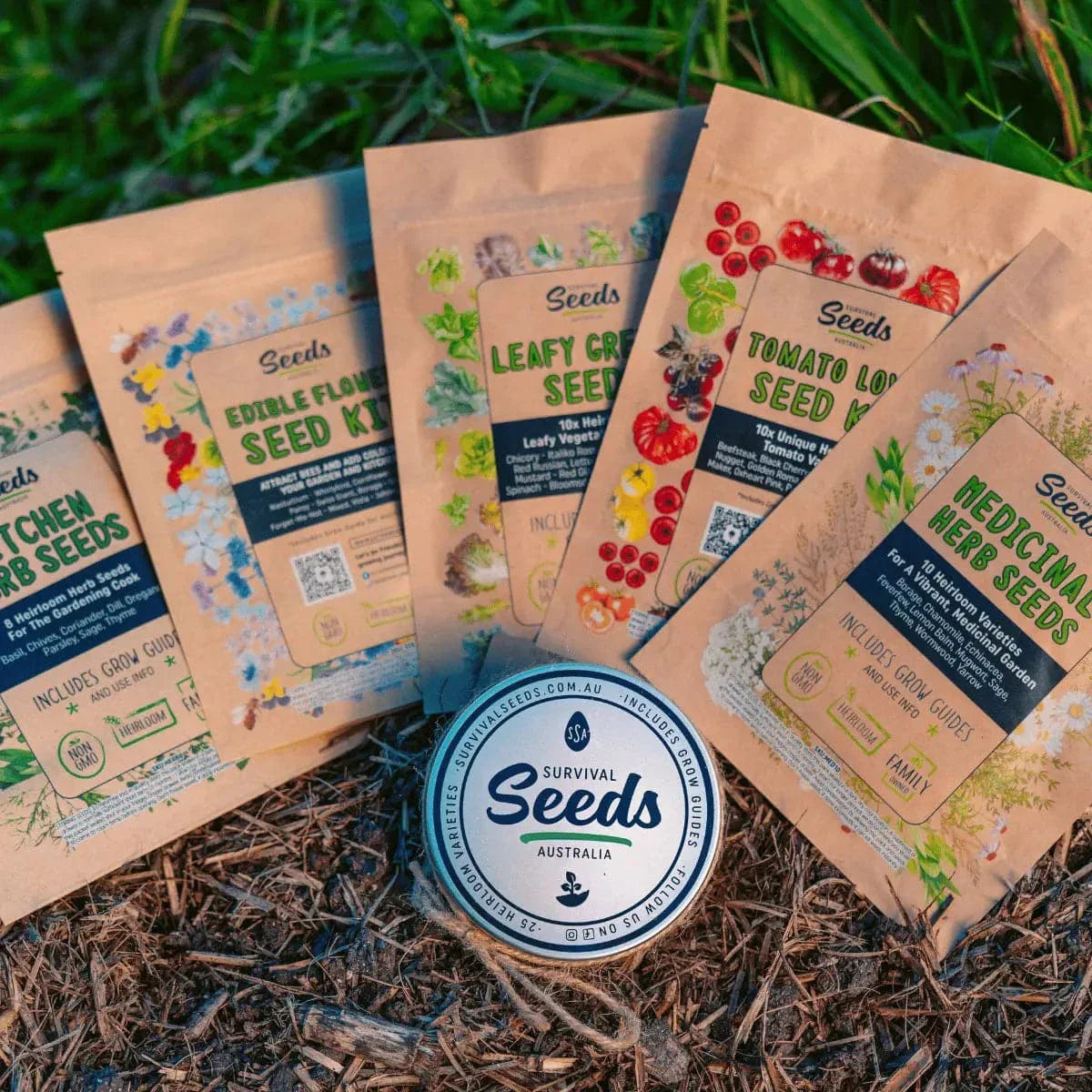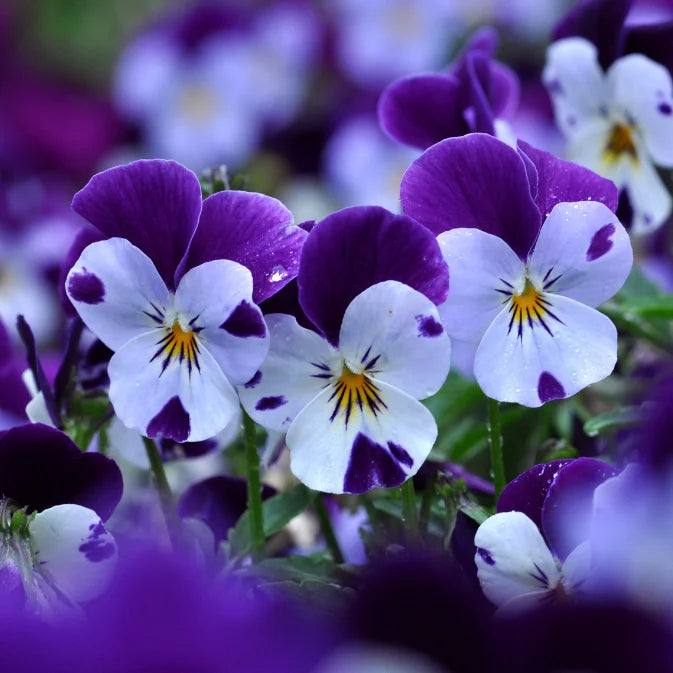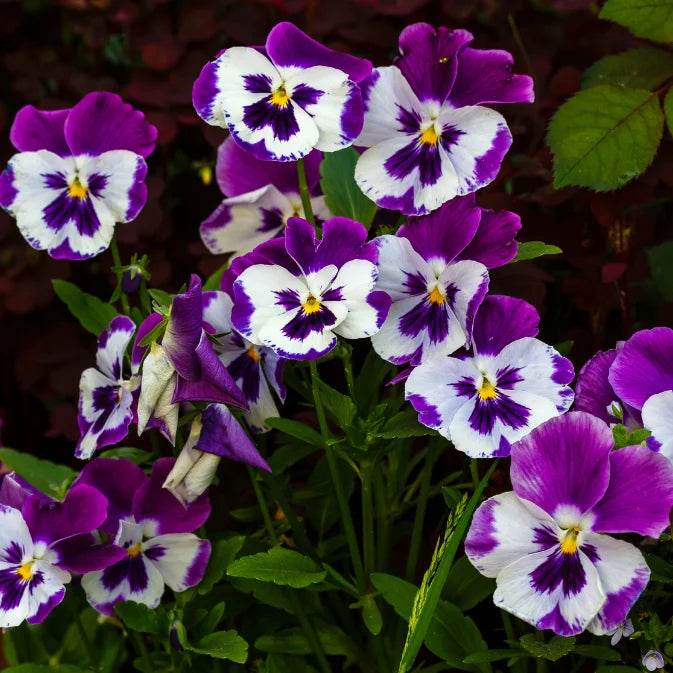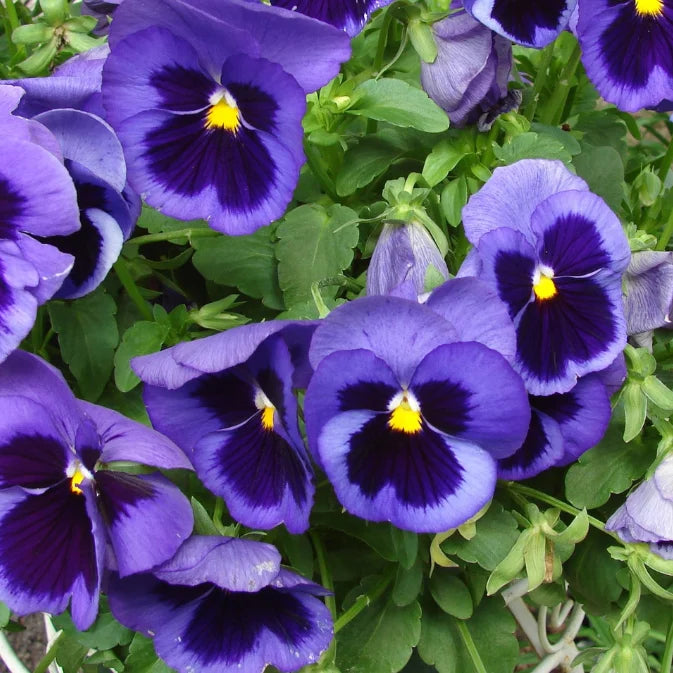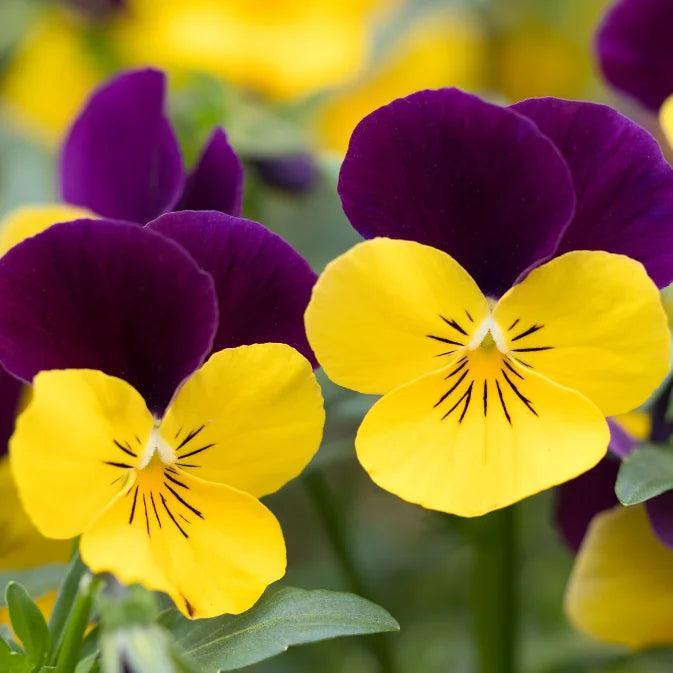Introduction
Violas are hardy, cool-season flowers admired for their mass of small, colourful blooms. Perfect for borders, pots, or ground covers, violas are a versatile and long-lasting addition to Australian gardens.
Why Grow Violas?
- Continuous Blooms: Provides vibrant flowers throughout the cooler months.
- Low Maintenance: Hardy plants requiring minimal care once established.
- Edible Flowers: Adds a decorative touch to salads, desserts, and drinks.
Overview of Viola Varieties
- Johnny Jump-Ups: Compact and self-seeding, with purple and yellow flowers.
- Sorbet Series: Hybrid varieties offering unique colour combinations.
- Helen Mount: A wildflower type with deep violet petals and golden centres.
Nutritional and Culinary Benefits
- Edible Uses: Violas’ flowers are edible, ideal for decorating cakes, cocktails, and salads.
- Medicinal History: Traditionally used for skin health and respiratory relief.
Planting Violas
Best Seasons for Planting
- Temperate Regions: Sow in autumn or late winter.
- Subtropical Regions: Plant in autumn to take advantage of cooler weather.
Soil Preparation and Amendments
- Soil Type: Fertile, well-draining soil enriched with compost.
- pH Level: Slightly acidic to neutral (pH 6.0–7.5).
- Preparation: Loosen soil to improve aeration and incorporate organic matter.
Seed Spacing and Planting Depth
- Spacing: Space plants 10–15 cm apart for full coverage.
- Depth: Sow seeds 5 mm deep, covering lightly with soil.
Caring for Viola Plants
Watering Schedule
- Water regularly to maintain consistent soil moisture, particularly during dry spells.
Fertilisation and Maintenance
- Apply a balanced liquid fertiliser every two weeks during blooming.
- Deadhead spent flowers to encourage new blooms.
Managing Weeds
- Use mulch around plants to retain moisture and suppress weeds.
Pest and Disease Management
Common Pests
- Aphids: Can cluster on stems, reducing plant health.
- Snails and Slugs: Damage leaves and flowers.
Organic and Preventative Solutions
- Spray aphids with soapy water or neem oil.
- Use organic slug bait or create barriers with diatomaceous earth.
Preventative Measures
- Avoid overhead watering to minimise fungal diseases.
Companion Planting
- Good Companions: Pair with pansies, snapdragons, and alyssum for vibrant displays.
- Avoid Planting With: Aggressive plants that might overshadow violas.
How to Grow Violas in Pots
- Choose the Right Pot: Use a pot at least 15 cm deep with drainage holes.
- Soil Mix: Fill with a nutrient-rich, well-draining potting mix.
- Planting: Sow seeds directly into the pot, spacing them 10–15 cm apart.
- Placement: Position pots in full sun to partial shade.
Harvesting Violas
When to Harvest
- Flowers: Pick flowers when they are fully open and vibrant for the best flavour and appearance.
- Leaves: Violas are not commonly harvested for leaves, but young, tender foliage can be used in salads.
Harvesting Techniques
- Use clean, sharp scissors to cut flowers at the base of their stems.
- Harvest in the early morning when the flowers are at their freshest and most hydrated.
Viola Uses
- Culinary Uses: Use fresh flowers as garnishes for cakes, drinks, or salads. They can also be candied for long-term use.
- Floral Displays: Place stems in a small vase with fresh water to enjoy indoors. Replace the water every two days for longer-lasting blooms.
- Drying Flowers: Press viola flowers in a book or use a flower press for crafts or dried arrangements.
FAQs
Do violas bloom all year?
Violas bloom prolifically in cooler months but may slow down during extreme heat.
Are violas frost-tolerant?
Yes, violas can withstand light frosts and often continue blooming in winter.
Can violas grow in pots?
Yes, violas thrive in pots with proper care and consistent watering.
Are violas self-seeding?
Some varieties, like Johnny Jump-Ups, self-seed and return each year.
How long do violas take to bloom?
Seeds germinate within 7–14 days, and plants typically bloom 6–8 weeks after sowing.
Violas are a delightful addition to any Australian garden, offering a burst of colour and edible blooms that enhance both outdoor spaces and culinary creations. With proper care, these hardy flowers will reward you with months of beauty and charm. Whether planted in beds, borders, or pots, violas are a versatile and rewarding choice for gardeners of all skill levels.
